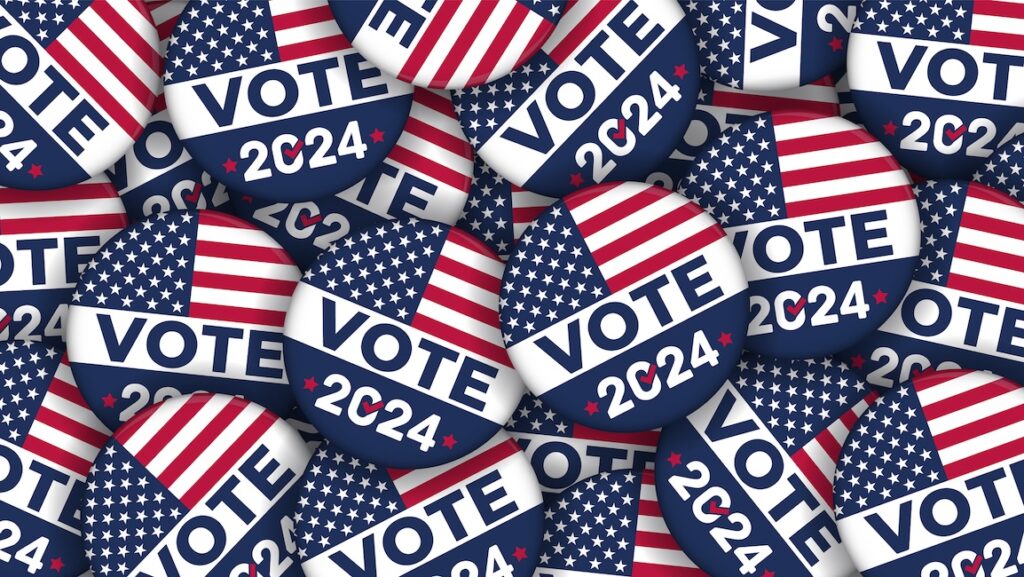(Getty Images)
By Armin Samii
Once again, Pennsylvania could be the ultimate swing state. But as closely divided as it may be, there’s something we ought to agree on: The winner of our electoral votes should have the support of at least 50% of Pennsylvanians.
There’s nothing more American than majority rule. But in the last two presidential elections, Joe Biden and Donald Trump won the Keystone State without a majority. Fewer than 85,000 votes separated the Democratic and Republican candidates in both 2016 and 2020 – while third-party candidates like Jill Stein and Gary Johnson won hundreds of thousands of votes.
With Vice President Kamala Harris and former President Donald Trump tied in the polls here, history is likely to repeat itself this November.
It’s time to fix this. Ranked choice voting would guarantee majority winners and solve the spoiler problem, once and for all.
According to recent polling, 3% of Pennsylvania voters say they plan to vote for someone other than Harris or Trump in November – including Libertarian Chase Oliver and Jill Stein of the Green Party. That may not seem like a lot, but with the race statistically tied, it could make all the difference.
Of course, some of these voters may “come home” and end up voting for Harris or Trump – nervous about the impact of actually voting for a third-party candidate and playing spoiler. No voter wants to help elect the candidate they like least.
But voters shouldn’t be afraid to vote for the person they like best. Ranked choice voting is an elegant solution – for both voters and parties – that gives voters more choice, not less. Alaska and Maine already use RCV for their presidential elections. Pennsylvania should follow suit.
RCV is easy. We rank things all the time in our everyday lives. We should have the same power at the ballot box. In an RCV election, voters can rank candidates in order of preference – first, second, and so on. If a candidate wins a majority of first choices, they win. If not, the race goes to an instant runoff. If a voter’s favorite candidate has no chance of winning, that candidate is eliminated and their vote counts for their backup choice.
Just imagine how different the current presidential campaign would look if we used RCV.
Jill Stein supporters could rank her first, and then rank Trump or Harris as their backup choice. If Stein came in last but kept Harris or Trump from getting a majority of the vote, Stein would be eliminated. Her supporters’ votes would instantly count for their backup choice. (The same goes for Oliver voters.)
Voters who aren’t thrilled about Harris or Trump could support their favorite candidate without the fear that they’d help their least favorite win in the process. No more “spoiler effect.” Instead of trying to knock Stein, Oliver, or others off the ballot, both parties would appeal for their supporters’ votes.
RCV is already used in local, state, or federal elections in 50 localities nationwide, and is on the ballot in four more states in November.
But it’s swing states like Pennsylvania where this kind of upgrade could have the most impact. For better or worse, modern presidential races now come down to a shockingly small number of votes in a handful of states. We’re lucky to be one of these crucial states, but with great power comes great responsibility.
In 2016, Trump won Pennsylvania by less than 1% of the vote; Biden won the state by less than 2% in 2020. If our presidential elections are going to keep coming down to a handful of votes in Pennsylvania, is it too much to ask that our state’s electoral votes go to someone who a majority of Pennsylvanians actually support?
The next president of the United States just might be up to us. We should guarantee that the winner represents all of us.
Armin Samii is a ranked choice voting (RCV) advocate in Pittsburgh, Pennsylvania. He is the founder of RCVis, and volunteers with March on Harrisburg to bring RCV to Pennsylvania.

